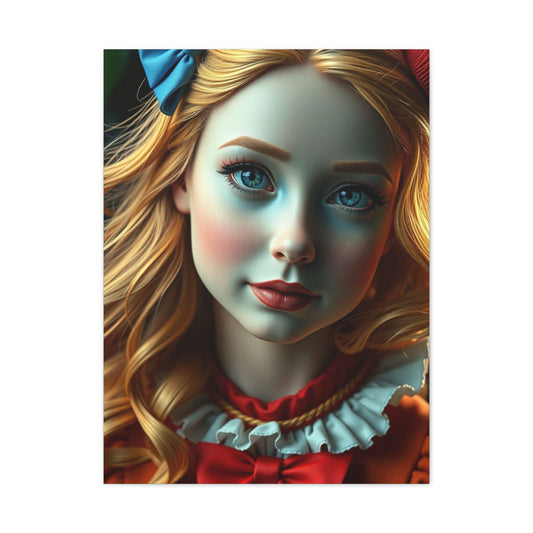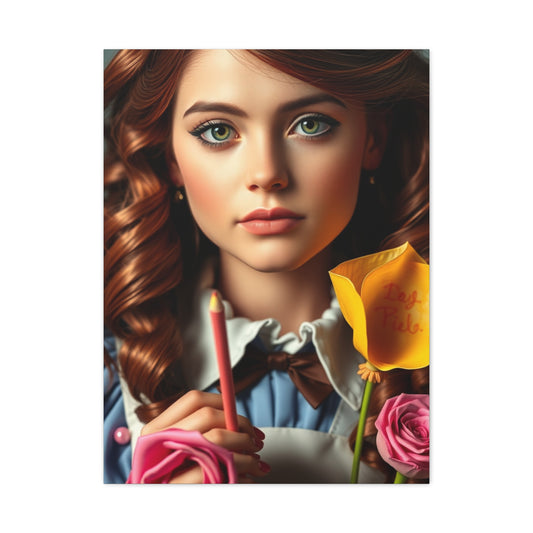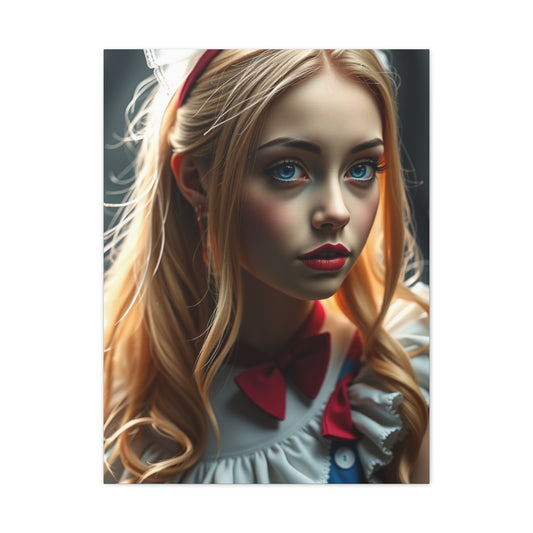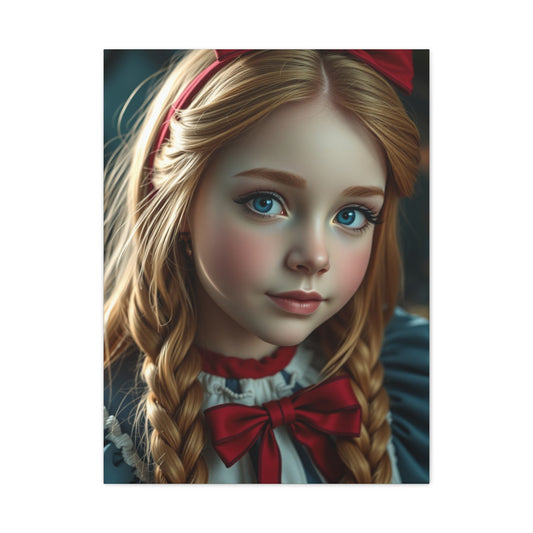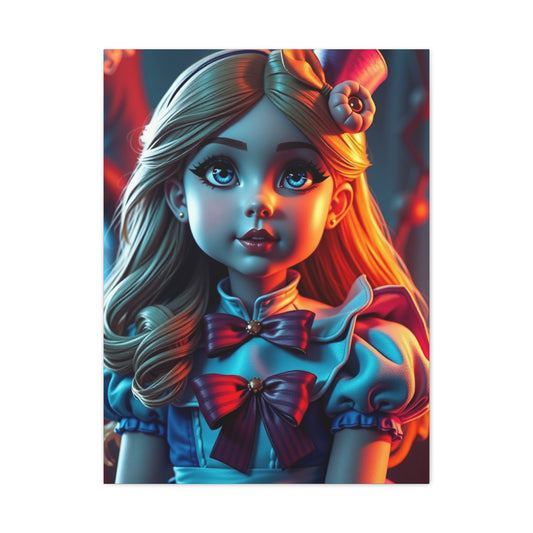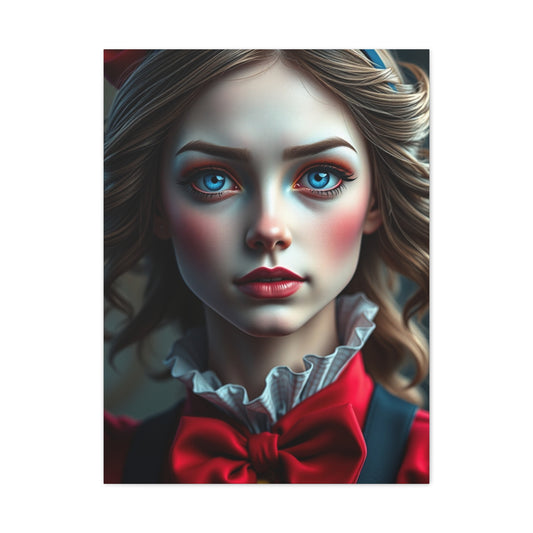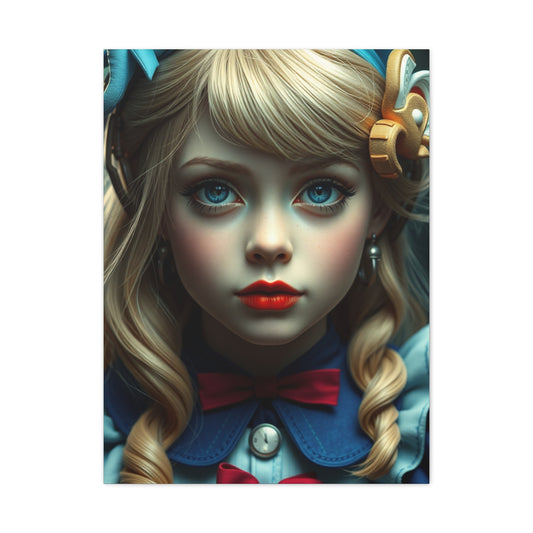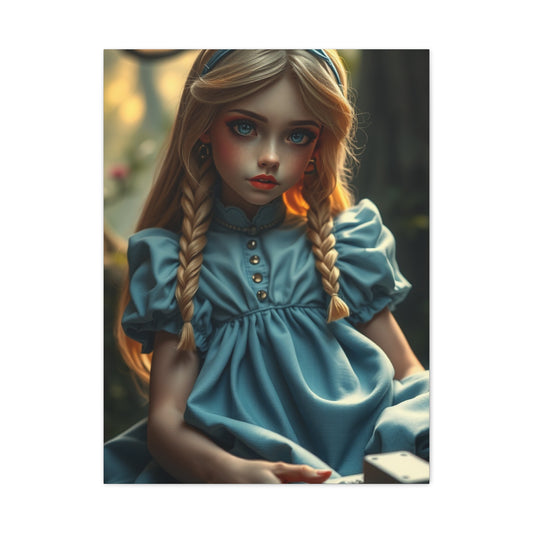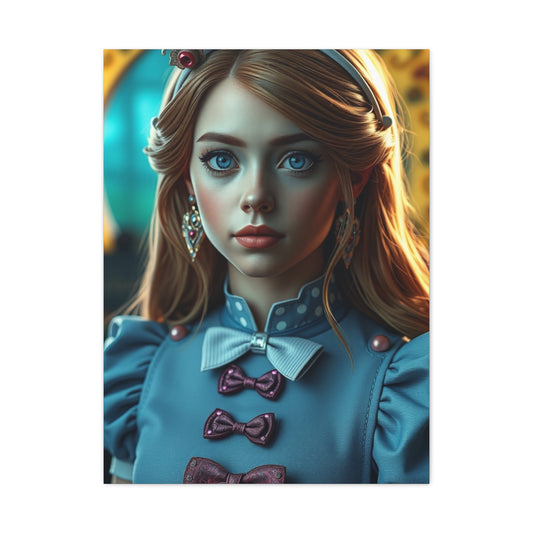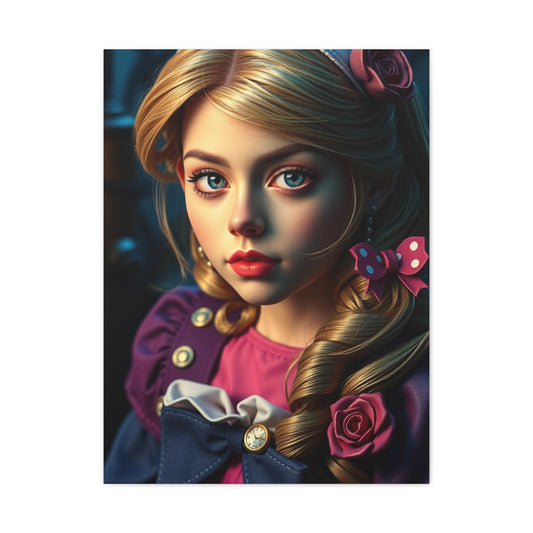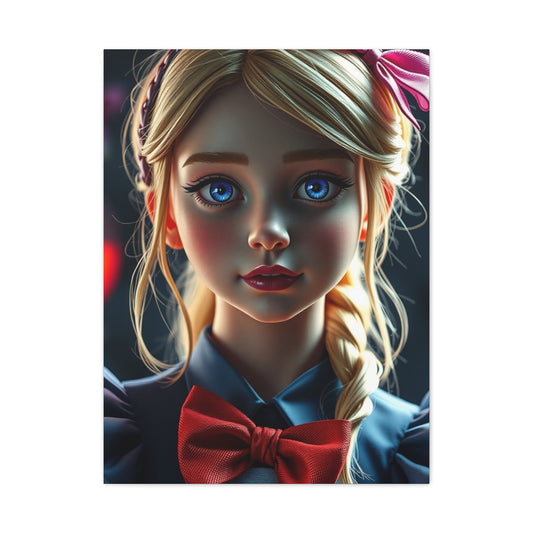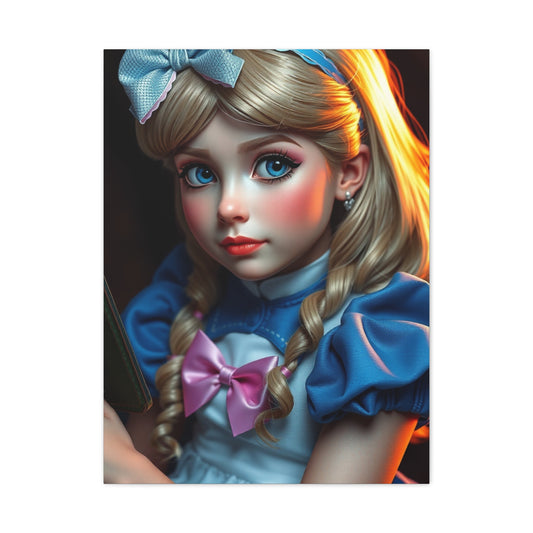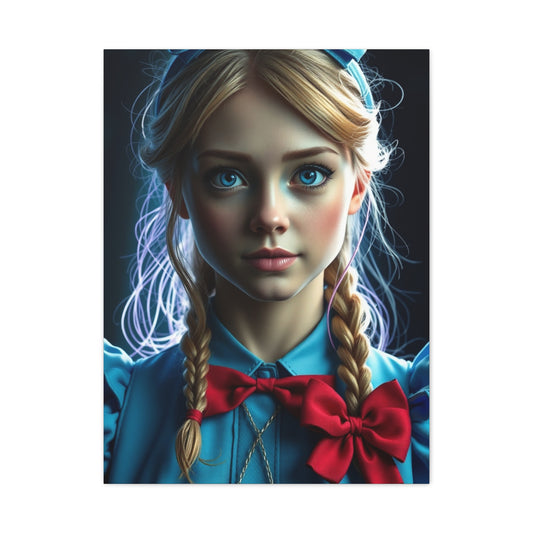-
Supreme Collection Alice In Wonderland Characters Art Wall Art & Canvas Print
Regular price From $141.23 USDRegular priceUnit price per -
Alice In Wonderland Characters Art Premium Supreme Gallery Wall Art & Canvas Print
Regular price From $141.23 USDRegular priceUnit price per -
Collection Alice In Wonderland Characters Art Wall Art & Canvas Print
Regular price From $141.23 USDRegular priceUnit price per -
Alice In Wonderland Characters Art Artisan Canvas Wall Art & Canvas Print
Regular price From $141.23 USDRegular priceUnit price per -
Collection Alice In Wonderland Characters Art Art Wall Art & Canvas Print
Regular price From $141.23 USDRegular priceUnit price per -
Vision Alice In Wonderland Characters Art Wall Art & Canvas Print
Regular price From $141.23 USDRegular priceUnit price per -
Elite Alice In Wonderland Characters Art Vision Wall Art & Canvas Print
Regular price From $141.23 USDRegular priceUnit price per -
Supreme Art Collection Alice In Wonderland Characters Wall Art & Canvas Print
Regular price From $141.23 USDRegular priceUnit price per -
Luxury Alice In Wonderland Characters Art Collection Wall Art & Canvas Print
Regular price From $141.23 USDRegular priceUnit price per -
Alice In Wonderland Characters Art Luxury Canvas Wall Art & Canvas Print
Regular price From $141.23 USDRegular priceUnit price per -
Supreme Alice In Wonderland Characters Art Gallery Wall Art & Canvas Print
Regular price From $141.23 USDRegular priceUnit price per -
Alice In Wonderland Characters Art Supreme Gallery Wall Art & Canvas Print
Regular price From $141.23 USDRegular priceUnit price per -
Masterpiece Alice In Wonderland Characters Art Vision Wall Art & Canvas Print
Regular price From $141.23 USDRegular priceUnit price per -
Alice In Wonderland Characters Art Refined Canvas Wall Art & Canvas Print
Regular price From $141.23 USDRegular priceUnit price per -
Supreme Alice In Wonderland Characters Art Collection Wall Art & Canvas Print
Regular price From $141.23 USDRegular priceUnit price per
Crafting Enchanting Alice in Wonderland Character Dolls for Memorable Party Decorations
Creating whimsical Alice in Wonderland character dolls transforms any ordinary celebration into an enchanting journey down the rabbit hole. These handcrafted works of art are far more than simple decorations—they are conversation starters, immersive centerpieces, and tangible reminders of one of literature’s most imaginative tales. Whether displayed at a whimsical tea party, a child’s birthday celebration, a themed bridal shower, or even a theatrical event, these dolls instantly set the tone and transport guests into Lewis Carroll’s fantastical world.
The art of dollmaking itself is a deeply rewarding creative pursuit. It allows enthusiasts to merge storytelling with craftsmanship, blending sewing, painting, and sculpting techniques to produce unique characters filled with personality. Bringing Alice, the Mad Hatter, the Cheshire Cat, or the Queen of Hearts to life not only sharpens practical crafting skills but also results in heirloom-quality keepsakes that can be cherished for years. For many, the joy lies not only in the finished doll but also in the meditative, hands-on process of creating something meaningful and magical.
In recent years, there has been a notable resurgence in Alice in Wonderland–themed events, driven by its timeless appeal and adaptability across age groups. This rising popularity has created an increased demand for authentic character representations. Unfortunately, many commercial options fall short—mass-produced dolls often lack the fine details, expressive features, and whimsical charm needed to truly capture the essence of Carroll’s beloved characters. They may be too generic, poorly sized for table displays, or simply lacking the handmade authenticity that elevates a celebration.
This is where custom dollmaking shines. By creating bespoke Alice in Wonderland character dolls, crafters can tailor every detail, from costume fabrics and facial expressions to size and color scheme. This ensures that the dolls align perfectly with the host’s vision and event theme. Custom creations are also budget-friendly compared to expensive, limited-edition collectibles, offering flexibility without sacrificing quality. Most importantly, handmade dolls carry a sense of artistry and uniqueness that cannot be replicated by mass production—making each piece a true work of wonder.
Understanding the Historical Significance of Wonderland Characters
Lewis Carroll's masterpiece introduced readers to unforgettable characters whose visual representations have evolved through countless adaptations. Alice herself embodies innocence and curiosity, traditionally depicted wearing a blue dress with white apron, symbolizing childhood wonder and adventure. Her appearance combines Victorian sensibilities with timeless charm, making her instantly recognizable across generations.
The Mad Hatter represents delightful eccentricity and creative chaos. Originally inspired by actual hat makers who suffered mercury poisoning from their trade, this character has become synonymous with whimsical celebrations and unconventional wisdom. His distinctive appearance features mismatched patterns, vibrant colors, and an oversized top hat that defies conventional fashion rules.
The Queen of Hearts embodies authority and dramatic flair, traditionally portrayed in royal regalia with heart motifs throughout her costume. Her character represents the arbitrary nature of power while maintaining an undeniable regal presence. These character archetypes provide excellent foundations for creating distinctive party decorations that resonate with audiences of all ages.
Essential Materials and Tools for Doll Construction
Successful doll creation requires careful material selection and proper tool preparation. Begin by acquiring high-quality muslin doll bodies, which provide excellent foundations for character customization. These bendable forms offer structural integrity while remaining lightweight enough for tabletop display. Eighteen-inch bodies work optimally for centerpiece applications, providing sufficient presence without overwhelming smaller party spaces.
Fabric selection significantly impacts the final appearance and durability of completed dolls. Choose cotton blends for their ease of handling and professional finish. Velvet adds luxurious texture for royal characters, while crisp cottons work perfectly for Alice's classic appearance. Lace trim, rickrack, and decorative ribbons enhance authentic period details and add visual interest to finished pieces.
Sewing supplies must include sharp fabric scissors, measuring tape, straight pins, and both hand sewing needles and machine needles in various sizes. Thread selection should complement fabric choices, with matching colors for structural seams and contrasting colors for decorative topstitching. Interfacing helps achieve crisp edges on aprons and collar pieces, while stuffing materials ensure proper shaping for three-dimensional elements.
Additional crafting supplies include fabric glue for temporary positioning, permanent fabric markers for pattern marking, and pattern paper for creating custom templates. Embellishments such as buttons, beads, miniature accessories, and specialty trims allow for character-specific detailing that brings each doll to life.
Designing Custom Patterns for Unique Character Dolls
Pattern creation represents the most crucial phase of doll construction, determining both fit and character authenticity. Begin by studying original book illustrations and various film adaptations to understand each character's distinctive features. Create simplified sketches that capture essential visual elements while remaining achievable for your skill level.
Using the muslin doll body as a mannequin, drape muslin or paper over different sections to create basic pattern pieces. This draping method ensures proper fit while allowing for design modifications. Start with simple geometric shapes and gradually refine details through multiple fitting sessions. Remember that doll clothing doesn't require the same ease allowances as human garments, but should accommodate the doll's pose and proportions.
For Alice's classic dress, begin with a basic bodice pattern that fits snugly through the torso and allows for sleeve attachment. The skirt should provide enough fullness for the characteristic Victorian silhouette without becoming unwieldy. The white apron requires careful proportioning to maintain authenticity while ensuring visual balance.
The Mad Hatter's costume demands more complex pattern pieces due to his elaborate tailcoat and multiple layers. Create separate patterns for the vest, jacket, and trousers, paying particular attention to proportion and fit. His jacket requires careful attention to lapel shaping and sleeve construction to achieve the proper Victorian gentleman's appearance.
The Queen of Hearts costume combines regal elements with dramatic flair, requiring patterns for multiple layers including an underdress, overgown, and ceremonial elements. Her distinctive collar and hood combination requires precise pattern drafting to achieve the proper framing effect around the face.
Constructing Alice: The Curious Adventurer
Alice's construction begins with her signature blue dress, which forms the foundation of her recognizable appearance. Cut the bodice pieces from quality cotton fabric, ensuring grain lines run properly to prevent distortion. The bodice should fit snugly without creating wrinkles or pulling across the doll's form. Interface the bodice front to maintain crisp lines and prevent stretching over time.
Sleeve construction requires particular attention to achieve the proper puffed appearance characteristic of Victorian children's clothing. Gather the sleeve heads carefully to create even distribution of fullness, and finish the cuffs with narrow elastic or gathering stitches. The sleeves should maintain their shape while allowing the arms to pose naturally.
The skirt construction involves careful calculation of fullness to achieve the proper silhouette. Too little fullness creates a flat, lifeless appearance, while excessive fullness overwhelms the doll's proportions. Gather the skirt evenly onto the bodice, distributing fullness primarily to the back and sides while keeping the front relatively smooth.
Alice's white apron serves as both a practical element and a character identifier. Create the apron from crisp white cotton, using interfacing to maintain structure. The bib should lay flat against the bodice, while the skirt portion should echo the dress's proportions without overwhelming the overall design. Delicate lace trim adds authenticity and visual interest.
Finishing touches include carefully crafted shoes from felt material, using buttonhole stitching for durability and authentic appearance. The stockings can be created from white knee socks, cut and finished with pinking shears to prevent fraying. Alice's blonde hair should be styled in the characteristic long waves, secured with a simple ribbon or band.
The looking glass accessory requires careful construction to remain lightweight while appearing substantial. Create the frame from cardboard or thin wood, covering with metallic paint or foil. The mirror surface can be actual mirror tile or metallic mylar for safety considerations.
Creating the Mad Hatter: Master of Millinery Madness
The Mad Hatter represents the most complex construction challenge among the three characters, requiring advanced sewing skills and attention to numerous intricate details. His costume consists of multiple layers that must work together harmoniously while maintaining individual character elements.
Begin with the foundation garments, starting with fitted trousers cut from diamond-patterned fabric. The trousers should fit snugly through the legs while allowing for natural posing. Pay particular attention to the crotch seam construction and waistband attachment to ensure durability and proper fit.
The vest construction requires careful attention to armhole shaping and front closure details. Interface the vest front to maintain structure and create sharp lines. The back can be cut from coordinating fabric to reduce bulk while maintaining the tailored appearance. Add authentic details such as watch pocket and decorative buttons to enhance character authenticity.
The signature tailcoat represents the most challenging element of the costume, requiring precise pattern drafting and construction techniques. The coat should maintain its shape while allowing arm movement and proper draping. Interface the lapels and collar pieces to achieve sharp, professional lines. The back vent detail adds authenticity and visual interest while requiring careful construction to prevent fraying.
Shirt construction involves creating the high collar characteristic of Victorian gentlemen's wear. The collar must stand properly while framing the face appropriately. Add ruffled details to the shirt front and cuffs, using narrow gathering techniques to achieve delicate, authentic-looking trim.
The polka-dot bow tie requires careful cutting and construction to maintain proper proportions and achieve the characteristic slightly askew appearance. Create the tie from lightweight fabric to prevent overwhelming the neck area while maintaining visual impact.
The Mad Hatter's iconic top hat demands exceptional attention to detail and construction expertise. Create the crown from sturdy interfacing or millinery wire, covering with black felt or fabric. The brim requires careful shaping to achieve the proper curve and proportion. Add the characteristic size tag detail, positioned slightly askew for authentic character representation.
Hair construction involves creating tousled curls that peek from beneath the hat brim. Use yarn or doll hair in brown tones, securing carefully to prevent shifting during handling. The hair should appear naturally disheveled while maintaining visual appeal.
The brass key accessory symbolizes the Hatter's role in Alice's adventures and adds an important character element. Choose an appropriately sized vintage-style key or create one from polymer clay or cardboard covered with metallic paint.
Fashioning the Queen of Hearts: Regal Ruler of Wonderland
The Queen of Hearts construction focuses on conveying authority and grandeur while maintaining the whimsical nature of the Wonderland setting. Her costume combines traditional royal elements with character-specific details that make her instantly recognizable.
Begin with the foundation dress cut from rich red fabric, designed to create a regal silhouette. The bodice should fit closely through the torso while allowing for proper posing and accessory attachment. Interface key structural areas to maintain shape and prevent sagging over time.
The overgown construction involves working with luxurious fabrics such as velvet or brocade to achieve the proper royal appearance. Cut the pieces carefully to match pattern elements and create visual continuity. The overgown should layer properly over the foundation dress without creating excessive bulk or restricting movement.
Sleeve construction for the Queen requires attention to period-appropriate styling while accommodating her commanding gestures. Create fitted sleeves that allow arm movement while maintaining elegant lines. Add decorative trim and heart-shaped buttons to reinforce the character's identity.
The distinctive collar and hood combination represents one of the most challenging construction elements. The collar must stand properly to frame the face while supporting the weight of the attached hood. Use interfacing strategically to maintain structure without creating stiffness that prevents natural draping.
The hood construction requires careful pattern drafting to achieve the proper medieval-inspired shape. The hood should frame the face attractively while maintaining the dramatic silhouette characteristic of the Queen's appearance. Line the hood with contrasting fabric to add visual interest and authenticity.
Royal accessories include the heart-topped scepter, which can be constructed from wooden dowel, polymer clay, and metallic paint. The scepter should feel substantial while remaining lightweight enough for the doll to hold naturally. Add decorative gems or beads to enhance the regal appearance.
The crown construction involves creating a base from sturdy material such as cardboard or craft foam, covering with metallic fabric or paint. Add heart-shaped embellishments and faux gems to create visual impact and character authenticity. Size the crown carefully to maintain proper proportions with the doll's head and hood combination.
Heart-shaped buttons and trim throughout the costume reinforce the character's identity while adding visual interest. Choose various sizes and materials to create depth and authenticity. The necklace of heart buttons should lie properly against the bodice without creating unwanted bulk.
Footwear for the Queen should reflect her royal status while complementing the overall costume design. Create slippers from red velvet or similar luxurious material, adding decorative elements that echo the costume's heart theme.
Advanced Construction Techniques for Professional Results
Achieving professional-quality results requires mastery of several advanced construction techniques that elevate handmade dolls from craft projects to heirloom pieces. Proper seam finishing prevents fraying and extends the life of completed dolls while contributing to their overall appearance.
French seams work excellently for lightweight fabrics and areas subject to stress. This technique encases raw edges completely, creating smooth, durable seams that won't fray over time. Use French seams for garment construction where both strength and appearance matter.
Bound seam edges provide excellent finishing for heavier fabrics or areas where French seams would create excessive bulk. Create bias binding from coordinating fabrics to add subtle color accents while providing practical edge finishing.
Interfacing application significantly impacts the final appearance and durability of structured elements. Choose interfacing weights appropriate to the fabric and intended use. Fuse interfacing carefully to prevent bubbling or shifting that would compromise the professional appearance.
Hand-sewing techniques add authenticity and allow for precise detail work that machine sewing cannot achieve. Master basic stitches such as backstitch, blanket stitch, and slip stitch for various construction needs. Hand-sewn buttonholes create authentic period details while providing functional closures.
Gathering techniques require practice to achieve even, attractive results. Use multiple rows of gathering stitches for heavy fabrics or areas requiring significant fullness reduction. Distribute gathers evenly by dividing marked sections and adjusting gradually.
Troubleshooting Common Construction Challenges
Even experienced crafters encounter challenges during doll construction that require creative problem-solving and technical knowledge. Understanding common issues and their solutions prevents frustration and ensures successful project completion.
Fit problems often arise when patterns don't translate properly from paper to fabric. Always create test pieces from muslin or inexpensive fabric before cutting final materials. Make adjustments gradually, testing frequently to avoid overcorrection.
Fabric selection mistakes can compromise both appearance and construction ease. Choose fabrics appropriate to the intended use and skill level. Slippery fabrics require extra care during cutting and sewing, while very heavy fabrics may overwhelm delicate doll proportions.
Proportion issues occur when individual elements don't work together harmoniously. Step back frequently during construction to assess overall appearance and make adjustments before proceeding. Sometimes reducing the size of accessories or trim can restore proper balance.
Structural problems develop when inadequate support causes garments to sag or lose shape. Add interfacing or internal structure as needed to maintain the intended appearance. Consider the doll's pose and display requirements when planning structural elements.
Detail attachment failures result from inadequate securing methods or inappropriate material choices. Test attachment methods on scraps before applying to finished pieces. Use appropriate techniques for different materials and stress levels.
Styling and Finishing Touches for Character Authenticity
The difference between amateur craft projects and professional-quality character dolls lies primarily in attention to finishing details and authentic styling choices. These elements transform basic constructed garments into convincing character representations.
Hair styling significantly impacts character recognition and overall appearance. Study reference materials carefully to understand each character's distinctive hairstyle elements. Use appropriate materials and techniques to achieve lasting styles that maintain their appearance through handling and display.
Facial painting or enhancement can add character personality when done skillfully. Use high-quality paints designed for fabric or plastic applications. Practice techniques on test materials before working on finished dolls. Sometimes subtle enhancements prove more effective than dramatic changes.
Accessories and props complete character portrayals while adding interactive elements that engage viewers. Choose appropriately scaled items that complement rather than overwhelm the doll's proportions. Create custom pieces when commercial options don't meet specific needs.
Color coordination throughout all elements creates cohesive, professional appearances. Develop color palettes that reflect character personalities while maintaining visual harmony. Consider how colors will appear under different lighting conditions and party settings.
Weathering and aging techniques can add authenticity to characters meant to appear lived-in or vintage. Use subtle methods that enhance rather than damage the construction. Test all techniques on sample materials before applying to finished pieces.
Display and Photography Considerations for Maximum Impact
Effective display techniques maximize the visual impact of completed character dolls while ensuring their protection during events and storage. Understanding basic display principles helps showcase construction efforts while creating memorable party atmospheres.
Lighting plays a crucial role in how dolls appear in party settings. Consider both natural and artificial light sources when planning displays. Position dolls to take advantage of favorable lighting while avoiding harsh shadows or glare that obscures details.
Background selection influences how well character dolls stand out and contribute to overall party themes. Choose backgrounds that complement without competing for attention. Solid colors often work better than busy patterns for highlighting detailed costume work.
Height variation creates visual interest in multiple-doll displays while ensuring all characters receive appropriate attention. Use risers, stands, or varying table heights to create dynamic arrangements that encourage viewer engagement.
Stability considerations become crucial when dolls serve as centerpieces or are positioned where they might be bumped or handled. Create sturdy bases or support systems that maintain proper positioning while protecting the dolls from damage.
Photography documentation preserves construction achievements while providing reference materials for future projects. Use appropriate lighting and backgrounds to showcase details and overall appearance. Consider both close-up detail shots and full-figure views for comprehensive documentation.
Maintenance and Storage for Long-term Preservation
Proper maintenance and storage practices ensure that carefully constructed character dolls remain in excellent condition for years of use and enjoyment. Understanding appropriate care techniques prevents damage while extending the useful life of these special creations.
Cleaning protocols depend on the materials and construction methods used in each doll. Develop specific cleaning procedures based on fabric types, trim materials, and attachment methods. Test cleaning methods on hidden areas before applying to visible surfaces.
Storage requirements vary based on construction materials and expected storage duration. Protect delicate fabrics from light damage, moisture, and pest intrusion. Maintain proper support for structured elements to prevent crushing or distortion.
Handling guidelines help prevent damage during setup, display, and storage activities. Train anyone who will handle the dolls in proper techniques that protect both the construction integrity and visual appearance.
Repair procedures should be established before damage occurs, including identification of appropriate materials and techniques for different types of wear or damage. Maintain small amounts of original materials for future repairs when possible.
Environmental protection involves controlling factors such as temperature, humidity, and air circulation that can damage materials over time. Consider these factors when choosing storage locations and display environments.
Expanding Your Skills Through Additional Projects
Creating Alice in Wonderland character dolls opens doors to numerous related projects that build on developed skills while exploring new creative territories. These additional projects provide opportunities for skill development and creative expression.
Miniature furniture and props complement character dolls while providing additional crafting challenges. Create themed pieces such as the Mad Hatter's tea table, the Queen's throne, or Alice's garden setting. These projects develop woodworking, painting, and small-scale construction skills.
Costume variations allow exploration of different artistic interpretations while building pattern modification skills. Create seasonal versions, historical variations, or personal artistic interpretations of classic characters. These projects develop design skills while maintaining character recognition.
Additional character development expands themed collections while challenging construction skills. Consider creating the White Rabbit, Cheshire Cat, or Caterpillar characters. Each new character presents unique construction challenges and opportunities for skill development.
Scale variations provide opportunities to explore different construction techniques and applications. Create larger dolls for dramatic impact or smaller versions for intimate settings. Different scales require modified techniques and proportional adjustments.
Mixed media approaches combine traditional dollmaking with other artistic techniques such as papier-mache, polymer clay, or wire armature construction. These combinations expand creative possibilities while developing diverse skill sets.
Bringing Alice in Wonderland to Life Through Character Dolls
The timeless magic of "Alice in Wonderland" has captivated readers for generations, inspiring creativity in various forms. One of the most enchanting ways to bring the whimsical characters of Lewis Carroll’s beloved tale to life is through the crafting of Alice in Wonderland character dolls. These handcrafted creations are more than just objects of nostalgia; they represent an artistic journey that merges technical skills with creative expression, offering a meaningful and rewarding crafting experience.
Creating Alice in Wonderland dolls isn’t just about replicating iconic characters like the White Rabbit or the Cheshire Cat. It’s about embracing a multifaceted process that blends literature, art, and craftsmanship. Every stitch, every fabric choice, and every little detail comes together to transform a simple idea into a tangible representation of magic. For crafters, these doll-making projects provide both a deep connection to the story and an opportunity for artistic growth.
The Crafting Journey: From Concept to Creation
The creation of Alice in Wonderland character dolls is a process that requires precision, patience, and passion. The journey begins with conceptualizing the character’s design—studying the literature and interpreting the essence of each personality, from Alice’s curious and adventurous nature to the Mad Hatter’s whimsical eccentricity. This process involves a balance of visualizing a character’s appearance while staying true to the narrative and its rich, fantastical qualities.
After the design phase, the next step is sourcing the materials. Fabric selection becomes crucial, as each material must evoke the character’s traits. For example, the White Rabbit may call for soft, velvety fabrics, while the Queen of Hearts could be best represented by deep, regal reds and golds. These choices go beyond mere aesthetics; they help bring each character to life in a tactile and sensory way. The texture, color, and pattern of the fabric must harmonize with the character’s personality.
Pattern drafting is another essential skill in this process. Crafting Alice in Wonderland dolls involves creating custom patterns to ensure that each part of the character fits together perfectly. A simple shift in the pattern can completely alter the doll’s appearance, making it crucial to achieve the right proportions and features. For many crafters, mastering pattern drafting is one of the most satisfying and skill-enriching aspects of this craft. It’s a technique that, once learned, can be applied to countless other projects, whether it’s creating costumes, toys, or even accessories.
The construction phase is where the magic truly happens. The sewing, assembling, and stitching bring each character into being, and this stage can take time and effort to perfect. Attention to detail is key in making sure that the doll mirrors its literary counterpart as closely as possible. Each stitch is part of the story—sewing the hem of Alice’s iconic blue dress or shaping the Cheshire Cat’s mischievous grin is a form of storytelling in itself. These dolls are more than just crafted figures; they’re personal interpretations of beloved characters, breathing new life into the classic tale.
The Satisfaction of Crafting: Overcoming Challenges and Developing Skills
One of the most rewarding aspects of creating Alice in Wonderland character dolls is the personal growth that comes with each completed project. Doll-making requires a diverse set of skills that stretch the boundaries of traditional crafting. From mastering sewing techniques to refining pattern-making skills, the process offers ample opportunities for artistic and technical growth.
Problem-solving is an inherent part of the crafting process. Whether it’s figuring out how to give the Queen of Hearts her iconic crown or finding the perfect method to create the Cheshire Cat’s signature smile, every doll presents a unique challenge. The satisfaction comes not only from completing the project but from overcoming those obstacles through creativity and innovation. As each doll takes shape, crafters gain confidence in their abilities, which translates into other artistic endeavors, whether it’s crafting other characters, designing costumes, or creating custom décor.
The dedication involved in creating these dolls also builds a strong sense of accomplishment. What begins as a simple concept or an image in the mind turns into a tangible work of art, reflecting the time, effort, and imagination that went into its making. This journey of discovery, both creative and technical, becomes part of the process, offering crafters a sense of pride and fulfillment that extends beyond the completed doll.
The Multi-Purpose Role of Alice in Wonderland Dolls
Alice in Wonderland character dolls are not just collector's items or simple craft projects; they can serve many purposes in a home or event setting. These dolls bring a magical, nostalgic touch to a wide range of environments and occasions. Whether displayed as intricate pieces of collectible art, used as party decorations, or given as thoughtful gifts, these handmade treasures hold both aesthetic and sentimental value.
For collectors, these dolls become cherished items that hold a special place in their hearts. Each doll is a unique creation, with its own character and charm, ensuring that no two are alike. This uniqueness adds to their allure, making them not just decorations, but valuable additions to any collection. For those who value craftsmanship and the artistry behind these dolls, each one tells its own story, evoking memories of the magical world of Wonderland.
In terms of event planning, Alice in Wonderland dolls offer a whimsical and creative way to bring the magic of the story to life. These dolls can act as part of a larger theme for birthdays, bridal showers, or tea parties. Their playful and charming nature helps create an atmosphere that’s both enchanting and imaginative. For children’s parties, Alice in Wonderland character dolls can serve as both decorations and fun interactive elements, bringing an element of fantasy to the festivities.
Gifting an Alice in Wonderland character doll is a gesture that shows thoughtfulness and creativity. These handcrafted dolls are a perfect choice for anyone who has a love for the whimsical world of Wonderland, making them ideal presents for birthdays, holidays, or as a commemorative item for special occasions. Whether a beloved friend or a family member, receiving one of these dolls becomes a lasting memory and a reminder of the magical storytelling world that continues to enchant us.
Crafting Skills That Extend Beyond Doll-Making
The skills gained from creating Alice in Wonderland character dolls are far-reaching and extend to a variety of other artistic endeavors. Once crafters become proficient in sewing, pattern drafting, and fabric selection, these skills open up new opportunities for creative expression in other areas.
Pattern drafting is one of the most transferable skills. Crafting dolls provides an excellent foundation for anyone looking to design and create their own clothing, costumes, or accessories. The principles of pattern making and fabric manipulation are applicable to a wide range of projects, from cosplay outfits to home décor.
Sewing techniques learned during the doll-making process also play a significant role in other areas of crafting. For example, the intricate embroidery used to create fine details on the dolls can be adapted for other fabric-based projects like quilts, pillows, or even wall hangings. These skills provide the versatility to experiment with different forms of creative expression, expanding a crafter’s repertoire and opportunities for future projects.
For those interested in costume creation, the lessons learned from crafting Alice in Wonderland dolls can help develop the precision and attention to detail required for full-scale costume design. The experience of dressing characters in miniature form can translate to understanding how fabrics move and behave, and how to achieve an overall look that’s both cohesive and visually stunning.
The Enduring Legacy of Alice in Wonderland Dolls
Crafting Alice in Wonderland character dolls is more than just a creative pursuit; it is a celebration of one of the most iconic and beloved literary works ever written. Since its publication in 1865, Alice’s Adventures in Wonderland by Lewis Carroll has captivated generations of readers, inspiring a rich legacy of adaptations, art, and storytelling. By creating dolls based on the book’s enchanting characters, crafters breathe new life into this classic tale, ensuring its continued relevance and charm for future generations.
These handcrafted dolls are more than mere representations of Alice, the Cheshire Cat, the Mad Hatter, or the Queen of Hearts. They serve as tangible links to a fantastical world, allowing readers and crafters alike to engage with the story in a hands-on, deeply personal way. The act of doll-making itself becomes an extension of the creativity and whimsy that is at the heart of the Wonderland narrative. As these dolls are made, the story of Alice’s adventures is reimagined and retold, preserving the essence of the characters and themes that have fascinated readers for over a century.
A Tangible Connection to Wonderland’s Magic
Alice in Wonderland character dolls offer a unique way for people to connect with the story. Rather than simply reading or watching adaptations, crafting these dolls encourages a deeper, more immersive relationship with the material. The detailed process of doll-making—sketching, sewing, assembling, and painting—helps the artist understand and appreciate the characters on a deeper level. In recreating these characters, crafters bring their own interpretation to the table, allowing each doll to embody not just the outward appearance of the character but also the spirit of the whimsical, surreal world they inhabit.
For many, crafting Alice in Wonderland dolls is an act of nostalgia, reconnecting with a story they cherished in childhood. But it also introduces a new generation to the magical world of Wonderland, creating opportunities for young readers to engage with the story through tactile and visual experiences. Whether it is the intricate details of Alice's blue dress or the expressive features of the Mad Hatter, these handcrafted dolls encourage children to form connections with the characters that go beyond what is found in the pages of the book.
The Art of Crafting Wonderland Characters
Creating Alice in Wonderland dolls is a form of artistic expression that requires a unique combination of creativity, craftsmanship, and storytelling. The process begins with an exploration of the character’s traits and quirks, capturing their essence through their clothing, posture, and facial expression. In this way, the crafting process mirrors the broader theme of character development in the book. Just as Alice embarks on a journey of self-discovery, so too does the crafter—learning about the character’s personality, their role in the story, and how best to bring them to life through the art of doll-making.
From choosing the right fabrics to creating the perfect facial expressions, every step in the creation of an Alice in Wonderland doll involves a careful balancing of artistic skill and imagination. Crafters often combine various techniques such as sewing, sculpting, and painting to achieve lifelike, intricate details. For example, the Queen of Hearts may be represented by a regal red gown and crown, while the White Rabbit may be depicted in his signature waistcoat and pocket watch. Each doll becomes a small masterpiece, a reflection of the crafter’s personal connection to the character.
The versatility of crafting Alice in Wonderland dolls also means that crafters can experiment with different materials and approaches, from traditional fabric dolls to more sculptural designs made with clay or resin. This variety adds another layer of richness to the craft, allowing each doll to be a unique piece that reflects both the story’s magic and the artist’s vision.
Preserving Alice’s Legacy Through Crafting
The creation of Alice in Wonderland character dolls is a way to preserve the timeless magic of the story for future generations. While books and films may come and go, these dolls offer something tangible and enduring. The process of crafting these figures not only honors the literary work itself but also contributes to the ongoing tradition of storytelling, artistry, and cultural preservation. Each doll is a handcrafted tribute to a beloved character, ensuring that the essence of Wonderland continues to inspire and captivate audiences for years to come.
One of the most powerful aspects of crafting Alice in Wonderland dolls is their ability to make the story more accessible. As physical objects, these dolls serve as reminders of the themes of the book—curiosity, imagination, and the importance of questioning the world around us. They become more than mere decorations; they are conversation starters, teaching tools, and heirlooms that can be passed down through generations, keeping the spirit of Alice alive long after the pages of the book are closed.
For parents and educators, Alice in Wonderland dolls provide an excellent way to engage children with the narrative in an interactive way. Children can hold and play with the dolls, creating their own versions of Alice’s adventures or re-enacting key scenes from the book. In doing so, they learn not only about the characters and the story but also about the process of creation and the importance of imagination. These dolls can also serve as a gateway to other forms of creative expression, such as drawing, writing, or acting, further encouraging the development of artistic and literary skills.
Crafting as a Gateway to Creative Development
The craft of creating Alice in Wonderland character dolls is not only about preserving the magic of the story—it is also about fostering creativity and skill development. The process of doll-making involves many different elements, from pattern design to sewing to painting, each requiring its own set of technical skills. Through this hands-on experience, crafters improve their craftsmanship while simultaneously expanding their creative horizons.
For those who are new to the craft, creating dolls based on Wonderland characters is an excellent way to learn about the basics of doll-making and design. It provides a structured yet flexible framework within which to experiment and grow as an artist. As crafters gain experience, they may begin to add their own unique flair to their creations, customizing the dolls to reflect their personal interpretations of the characters. This creative freedom is one of the most rewarding aspects of the craft, as it allows artists to make the characters truly their own.
More experienced doll-makers can take their skills to new heights by experimenting with advanced techniques, such as needle sculpting, embroidery, and intricate facial painting. These advanced methods offer endless opportunities for refinement and personal expression, allowing crafters to create dolls that are as detailed and lifelike as they desire. In doing so, they not only honor the legacy of Alice in Wonderland but also push the boundaries of what is possible in the world of handmade dolls.
Conclusion
As we look to the future of Alice in Wonderland character dolls, it is clear that their significance will continue to grow. These dolls serve as a tribute to the lasting power of Alice’s Adventures in Wonderland—a story that, despite its initial publication over 150 years ago, continues to captivate readers of all ages. By crafting these dolls, artists help ensure that the magic of Wonderland is preserved and passed on to future generations, just as the story has been passed down through books, films, and artwork over the years.
The handcrafted Alice in Wonderland dolls created today will continue to hold a special place in the hearts of collectors, educators, and readers alike. These one-of-a-kind creations stand as testaments to the power of literature, imagination, and the artistic process. As they are lovingly made and displayed, they serve as lasting reminders of the joy and wonder that comes from exploring the magical world of Wonderland.
Through these dolls, the legacy of Alice, the Cheshire Cat, the Queen of Hearts, and the many other memorable characters lives on. The magic of Wonderland will continue to enchant and inspire future generations, ensuring that this timeless tale remains as relevant and beloved as it was when first written.
Crafting Alice in Wonderland character dolls is a transformative experience for any artist. It is a journey that requires dedication, skill, and a deep connection to the characters and the themes they represent. Each doll serves as a piece of art, a reflection of the creator's personal interpretation of the story and its characters. Through this process, crafters not only preserve the magic of Wonderland but also celebrate the enduring power of creativity and imagination.
Whether they are crafted as part of a collection, given as thoughtful gifts, or displayed as part of a special event, these dolls are timeless treasures that keep the spirit of Alice in Wonderland alive for generations to come. Through the art of doll-making, the magic of Wonderland lives on, inspiring future crafters and readers to continue exploring the boundless possibilities of imagination.
These dolls are more than just collectibles—they are gateways to a world of adventure, curiosity, and creativity. As they are passed down from one generation to the next, they carry with them the spirit of the original story, ensuring that the magic of Alice in Wonderland will never fade.

